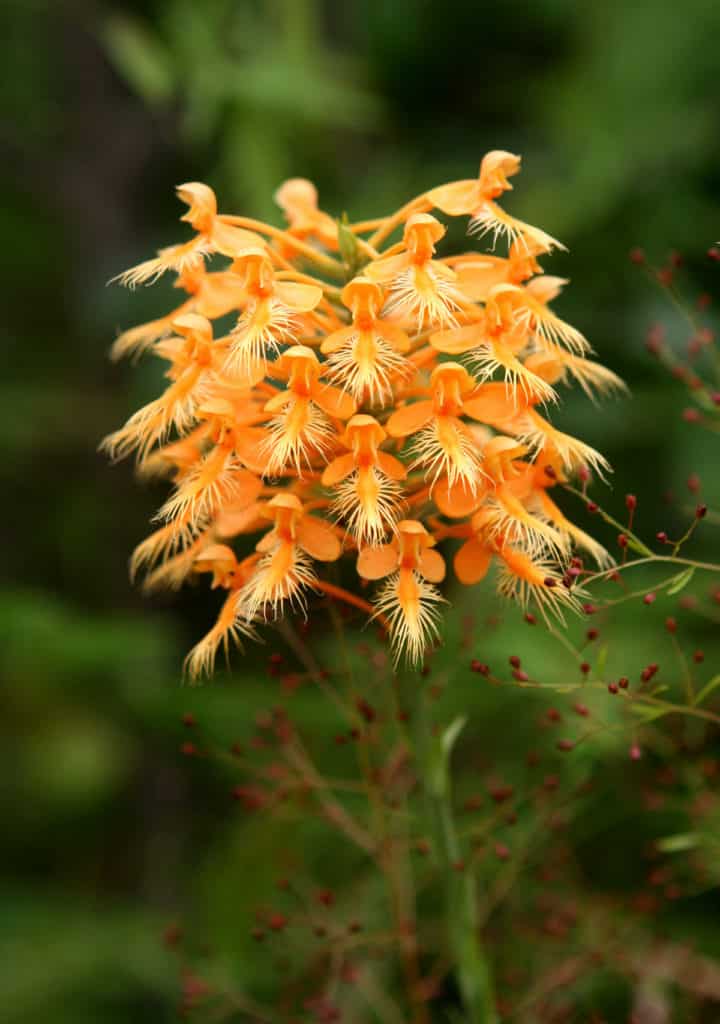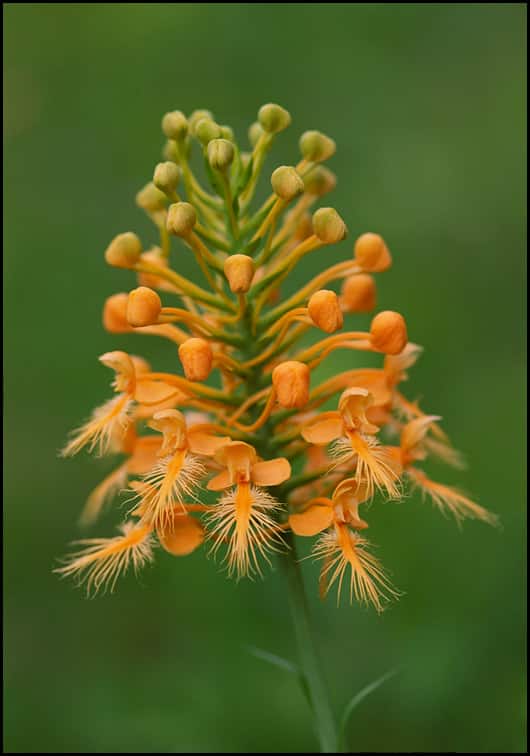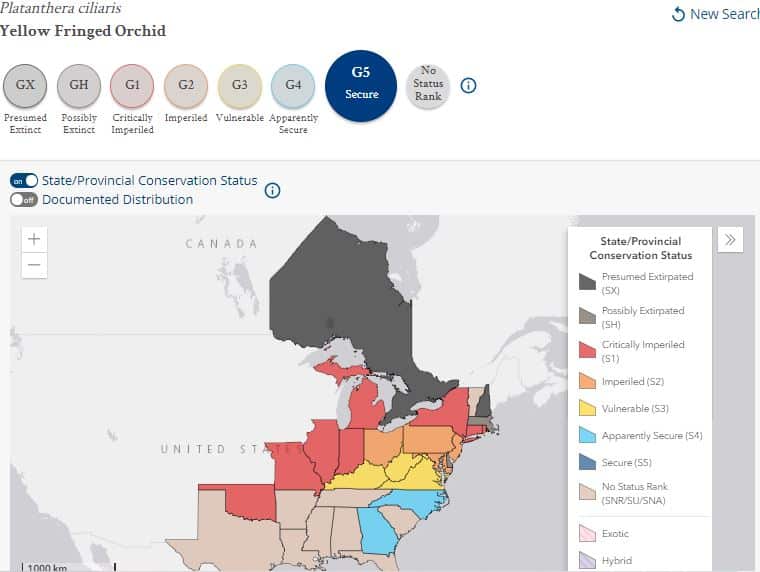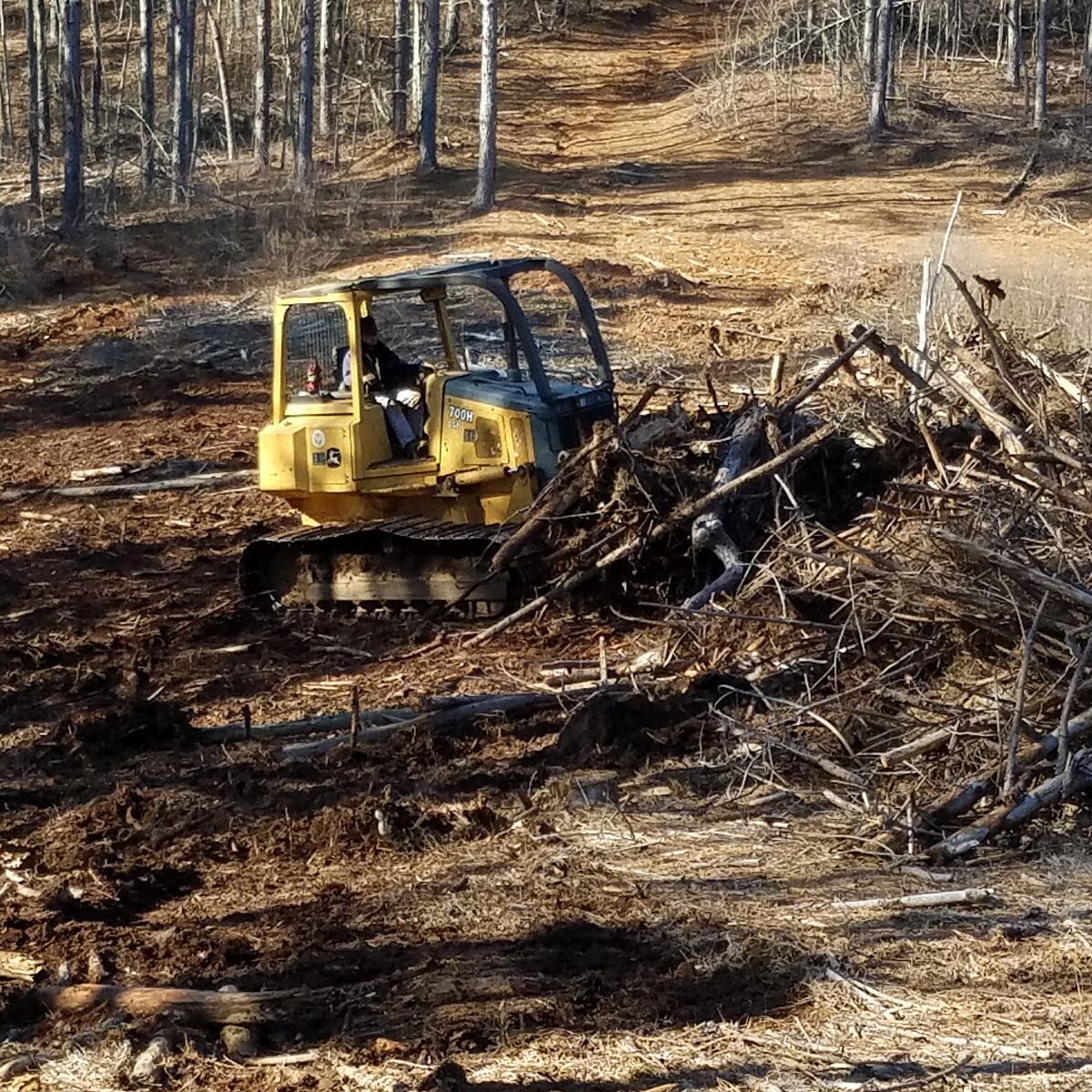Orange-fringed Orchids
Platanthera ciliaris
Status: Secure
Orange-fringed Orchids are large plants with about 115 bright yellow or orange flowers. At the lower part of the stem, they have between 2 to 4 large leaves. During the summer, these flowers bloom and are commonly seen in gardens around households or commercial buildings.


Habitat & Range
The orange-fringed orchids are found in eastern Canada and the southeastern areas of the United States. These orchids prefer moist environments like meadows, marshes, and woodlands with damp soil. Full sunlight is important for this orchid because shade can cause the flowers to stop growing. Orchids are usually in open areas where they can get sunlight and where butterflies can easily pollinate them.
Food Web & Energy Flow
Orange-fringed orchids are primary producers since they get their energy directly from the sun. In order for these plants to survive they require soil, water, and a lot of sunlight.
Relationship to Fire
Frequent fires are important for Orange-fringed orchids. If prescribed fires on the forest floor are not constant in the Longleaf pine ecosystem, other plants and trees can grow tall, blocking this plant species from the sunlight. Orange-fringed orchids are shade intolerant, which means they are unable to survive when little sunlight is available. After a fire takes place in an area, these orchids can sprout immediately.

Conservation Status
Orange-fringed orchids are experiencing different levels of pressure throughout the U.S. and Canada. Overall, their conservation status is Secure but they are still facing a decline in population from fire suppression and land development.

Human Impacts/ Threats

Land Use Conversion
Longleaf forests and the habitat it supports is being cleared or converted to use the land for other uses like houses, roads, agriculture, and even to grow different types of trees to sell.

Fire Suppression
Many people think of fires in the forest as bad, so they work hard to prevent or suppress them. But longleaf forests NEED regular fire to support habitat for the species that live there!
Resources
U.S. Forest Service. Plant of the Week
North American Orchid Conservation Center. Orchids
Lady Bird Johnson- Wildflower Center. Plant Database
Go Botany - Native Plant Trust. Orange Fringed Bog-Orchid
